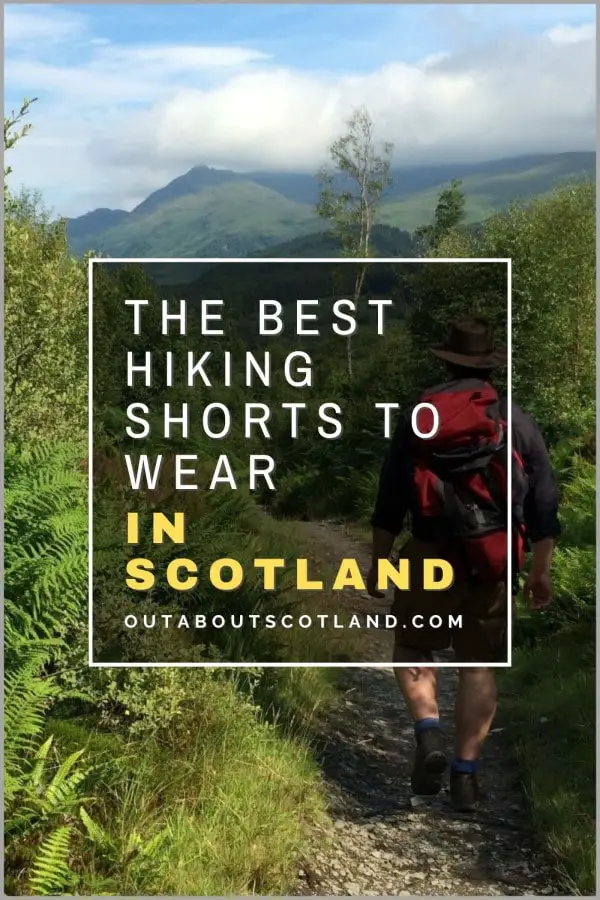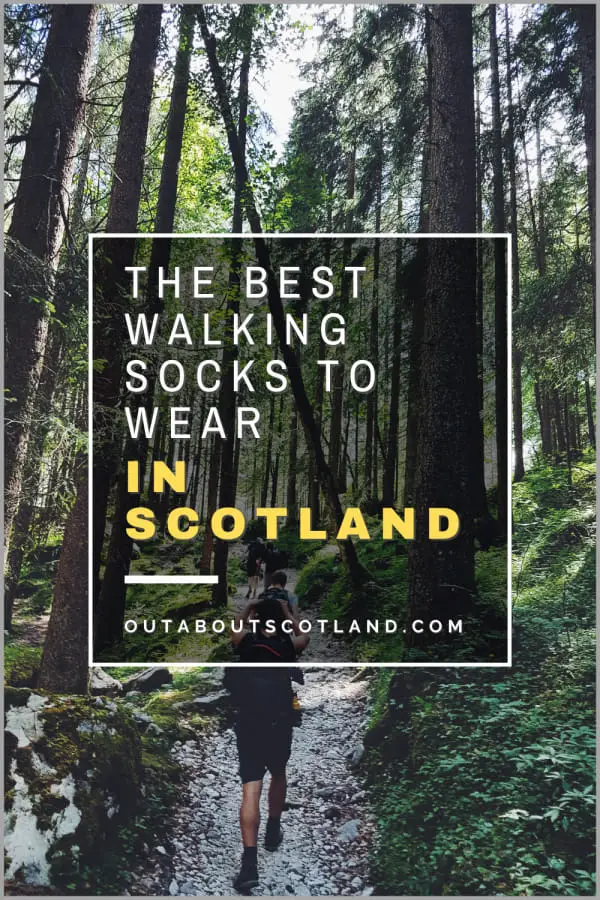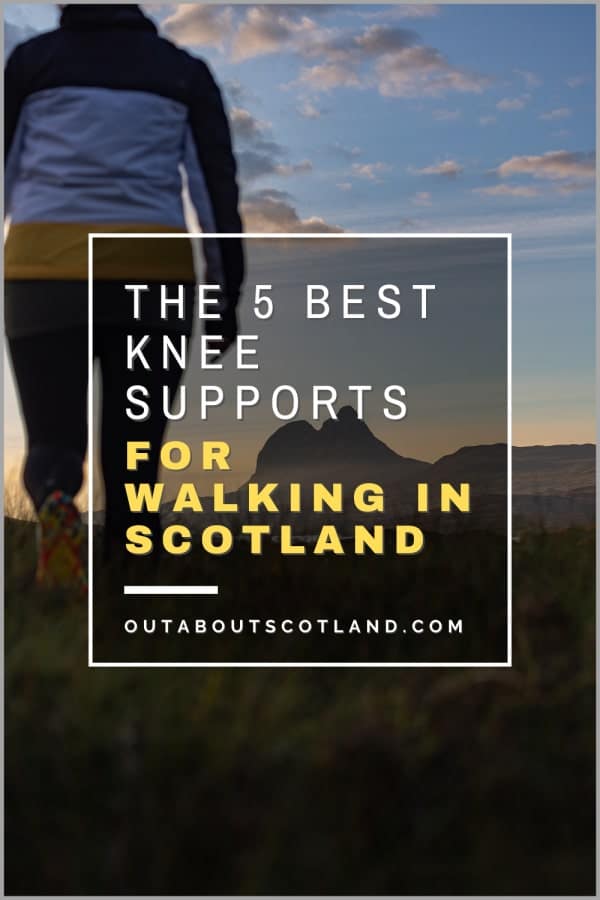Peeking out of your tent door as the sun rises over a stunning landscape has to be the highlight of any camping holiday in Scotland, but it’s not so enjoyable if everything in your tent is damp thanks to a leaking roof and you’re bleary-eyed due to the light that’s been keeping you awake since 4 am.
In this article, you’ll discover a collection of the best tents for summer camping that are lightweight, robust and easy to use. Each tent has been thoroughly tested in the field and they’re all recommended for their price, size, weatherproofing and ease of pitching for a summer outdoor adventure in Scotland.
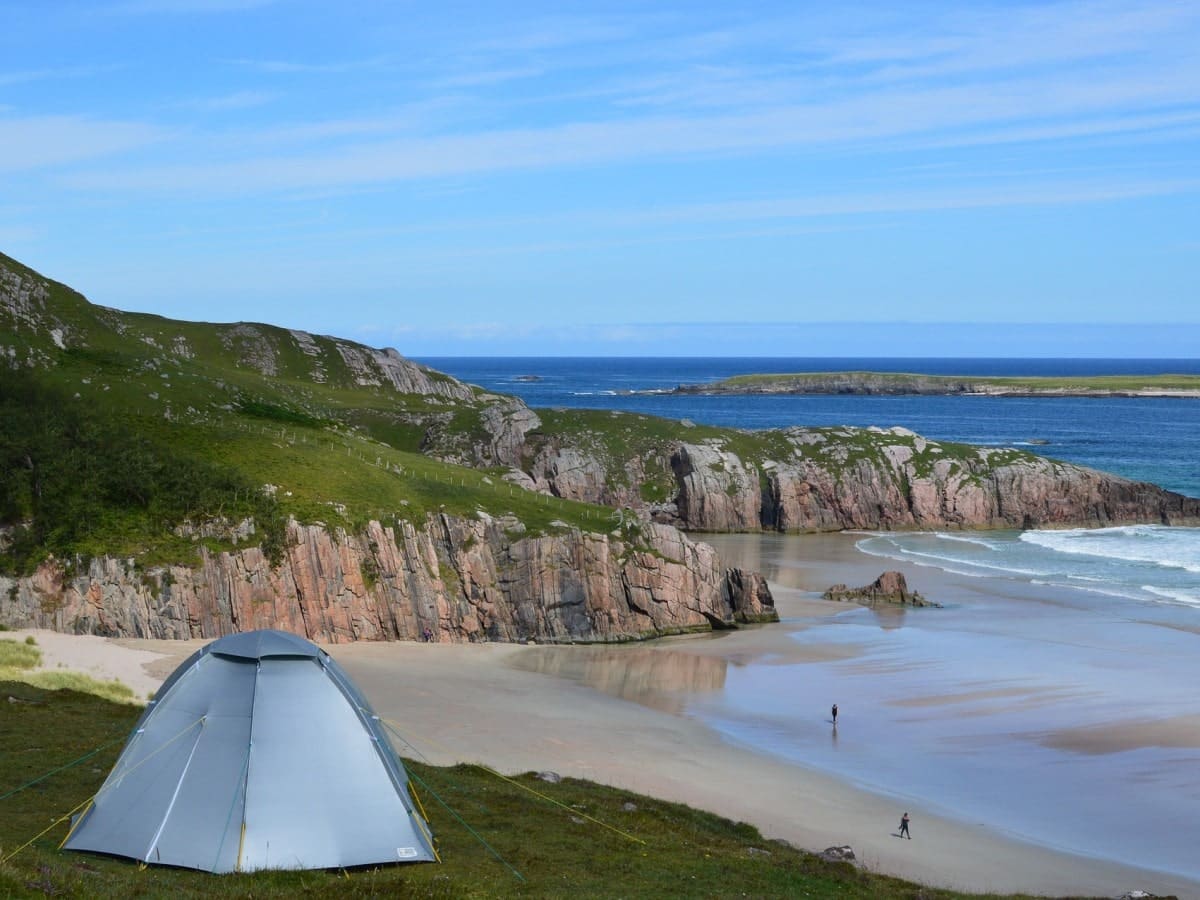
In a hurry? If you don’t have time to read the reviews, follow the link below to purchase my #1 recommended tent on Amazon.
Recommended tent for summer camping in Scotland: Coleman Coastline 3 Plus
The Best Tents for Summer Camping in Scotland
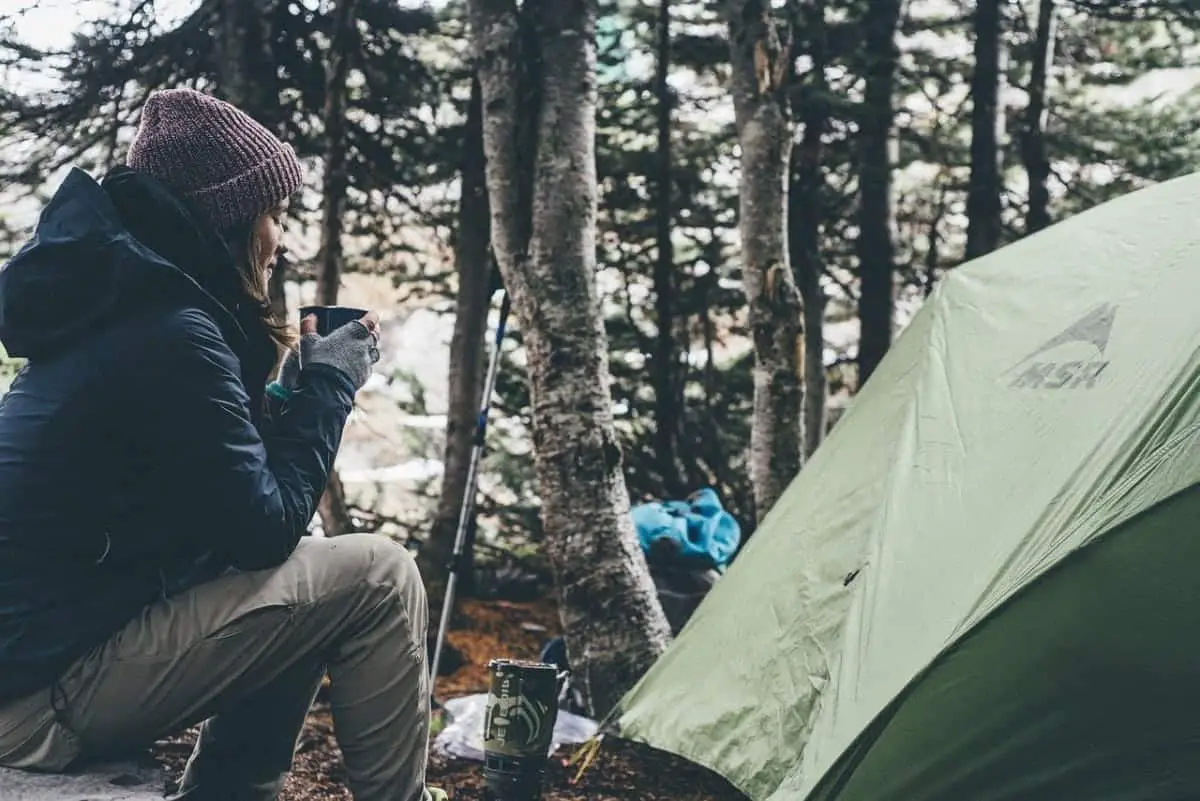
A tent opens up opportunities to get completely off-grid, especially if you choose one that’s small enough to carry. You can easily go for a hike and spend the night under the stars amid a beautiful mountain landscape, or perhaps on the edge of a golden beach where you can drift off with the sounds of the sea splashing nearby.
Whatever you decide to do on your visit to Scotland, you’re pretty much guaranteed to have a great time when you stay in a tent, but there are a couple of considerations to bear in mind when choosing one. First and foremost, your tent must keep the wind out and keep you dry, but it should also be light enough to carry and big enough to accommodate you, your family, and your camping equipment.
Useful features include blackout fabric in the sleeping area to ensure you get a good night’s kip, an external canopy to sit outside away from the rain (and occasional) hot sun, and a fine inner mesh to deter those pesky, bitey midges that can bring grown men to tears.
The following tents are designed for spring/summer use and all cover most of the bases necessary for a camping trip to Scotland, plus they’re available on Amazon Prime which means you can make use of Amazon’s fantastic delivery and returns service.
Top 5 Recommended Tents
Coleman Coastline 3 Plus
Best Family Tent
I’ve looked at a gazillion tents over the years I’ve been camping in Scotland and I’ve always been impressed with Coleman. Their tents are well-made, easy to assemble, sell for a reasonable price, and I’ve had no trouble finding spare parts for them online – which are the exact reasons why my last tent purchase was this Coastline 3 Plus.
This is a mid-range tent, but it punches well above its weight when it comes to features, which include a comfortable 3-berth sleeping area, a large porch, and superb 3,000 mm-rated waterproofing. The fibreglass poles are surprisingly sturdy yet very light, and in the two years that I’ve been using the tent, I’ve only managed to break one pole, which is a bit of a record for my heavy-handed tent-building skills.
The best thing about the Coastline 3 Plus, however, is the large open porch that has three doors (one doubles as a canopy) that can all be rolled away, meaning you can position the tent and always be able to maximize your privacy or get an open view outside as you see fit.
Pitching it only takes around ten minutes and it feels very sturdy when set up thanks to the quality guy ropes and poles and I can confirm I have never, ever experienced water ingress, even on a very wet camping trip in October. In fact, the only negative I have is the weight, which at 7 kg means you won’t be carrying it too far from the car, but then this isn’t a tent that’s marketed for backpacking anyway, in fairness.
- Compact three-person tunnel tent: With spacious vestibule for separate living and sleeping; ideal for active campers and weekend trips
- Well-designed camping tent with functional extras: Easy to pitch; Highly flexible, lightweight fibreglass poles withstand even strong winds; Two ventilation flaps, inside pockets, integrated cable slot
- 100 Percent waterproof tent: 3000 mm HH in combination with taped seams and fully sewn-in ground sheet keeps the tent absolutely waterproof
- Practical vestibule: Offers additional storage space for equipment or muddy boots; Three large entrances for maximum ventilation
- Size trekking tent pitched: 4.4 x 1.9 x 1.5 m (L x W x H); sleeping cabin: 4.2 m² and living area: 3.8 m² = 8 m²; packing size: 66 x 18 x 18 cm; weight: 7.2 kg; includes carrying bag, guy ropes and sufficient tent pegs
Vango Banshee 200
Best Backpacking Tent
Vango is another well-known manufacturer of camping equipment and they’ve pretty much perfected the design of backpacking tents. From all the models I’ve seen I would have to rate the quality of Vango as slightly ahead of Coleman and their levels of waterproofing are one of the best in the business as can be seen in this model which has an excellent hydrostatic head rating (see the bottom of the page for an explanation).
The Banshee 200 is a small, low-lying tent that’s best used for solo treks, but you could squeeze a couple of people in there for a couple of days at a push, although you might struggle for storage space.
The best features of this tent are its overall robustness with metal alloy poles so you don’t have to worry about them snapping when you’re miles from anywhere, and an ultra-thick waterproof groundsheet.*
It has a porch of sorts but because it’s quite low you can’t sit in it, but it’s perfect for lying down with a cup of tea when you wake up with the door unzipped onto a breathtaking mountain view. And that’s exactly the type of camping trip where this Vango Banshee 200 shines. It’s easy to pitch and repack into its bag, it’s lightweight, and it’s guaranteed to keep the weather at bay no matter if it’s blowing a hooley or the skies are pouring.
The quality you get for the price they’re asking for is, in my humble opinion, outstanding.
*Top-tip: To insulate and waterproof your tent even further you can peg a second groundsheet down and then position your tent on top of it. Amazon has loads of groundsheets for various tent sizes that cost less than £20, which is money well spent in my opinion. View them here (Amazon link).
- FULLY WATERPROOF - The flysheet is made from ProTex 70 denier polyester which is waterproof and durable with 3000mm HH. It has a waterproof and durable 70D Polyester groundsheet with 6000mm HH. Fully taped seams reinforce the waterproof protection.
- STURDY - TBS(R)II Tension Band System ensures the tent performs in adverse conditions, especially in strong, changeable winds. When tensioned, the bands brace the pole at 3 points, and reduces sideways movement.
- EASY TO PITCH - The flysheet and inner pitch together making it quick and easy to erect and the Vango PowerLite 7001-T6 alloy poles are lightweight, durable and colour coded for intuitive pitching.
- EXTRA FEATURES - Pre-angled poles to achieve greater internal space than with a standard curve, breathable polyester inner to allow condensation to pass through, twin flysheet doors, inner pockets and orange reflective guylines
- DIMENSIONS - L265cm x W175cm x H95cm. Weight: 2.4kg. Packsize: 47 x 18 cm. Pitching time: 7 mins. Capacity: 2 person
Vango Apollo 500
Best 5-Person Tent
Vango does more than just manufacture backpacking tents for hikes into the wild outdoors and this Apollo 5-man tent proves they can cater to all markets. I’ve been lusting after one of these since I saw one pitched next to me at a campsite a couple of years ago, and I’ve been following the user reviews since then which are almost all overwhelmingly positive.
Whether it was the skill of the person I saw pitching it or just the design I’m not sure, but it was put together in minutes and seemed to accommodate the young couple with their child and dog with ease.
The Vango Apollo is very compact at 70x23x20 cm and weighs just 9Kg which is very respectable for a tent that sleeps five people, although let’s be honest, you’re not going to want to carry it on a long hike. That being said, if you’re thinking of sticking it in the boot and pitching it close to the car you won’t go far wrong, even in places where it’s prone to be a wee bit breezy thanks to the extra-thick 70 Denier flysheet.
The porch area is a good size for an all-in-one dome tent but I have a feeling it’s going to be a wee bit small for five adults. Three people will have loads of space though and the giant porch offers lots of storage, and the clear side panels are a handy feature for a cosy early morning brew.
The only small negative I have with the Vango Apollo 500 is that it’s not quite high enough for an adult to stand up in, but then I guess if it was any bigger the thick material would mean it would be a pain to carry. All in all, this is a great all-rounder that’s quickly erected, is made from durable materials, and it even looks good.
- WATERPROOF TENT - Protex 70 Denier Polyester Flysheet, 3000 mm HH - your 5 man tent is made from highly waterproof, durable and reliable fabric, exclusive to Vango
- LINKED-IN GROUNDSHEET - Easy to clean groundsheet that can be attached or detached from the living area, simply roll under the bedroom area when not required
- DIAMOND CLEAR WINDOWS - Maximise light and visibility to provide a bright and airy environment
- FAST PACK TENT BAG - Oversized opening for easy packing and compression straps to control pack size
- WATERPROOF PE GROUNDSHEET - Robust and hardwearing fabric to stand up to the rigours of the most active campers
Amazon Basics Tent
Best Camping Tent for Two People
Cheap and cheerful is a good way to sum up this bright orange tent from the Amazon Basics range. Its cheap price might make you think you couldn’t use it for more than a few days in the great outdoors but as long you reserve it for summer-only use there’s no reason you couldn’t use it for an entire holiday.
This tent is a dome design which means it shouldn’t be used anywhere there are strong winds as the 1.5-metre centre height will be buffeted in all directions, but set it up in a secluded campsite and it will do the job admirably. It’s billed as a 4-berth tent but to be honest, that’s pushing it, although if you’re a couple you’ll find the 2.7 x 2-metre floor plan is surprisingly roomy.
Pitching it is a doddle thanks to the seamless pole sleeves and carrying it shouldn’t be a bother either as it only weighs 4 Kg, although I’m not too sure how long the included carry bag will last – but then at around £60 you can’t really expect top-tier quality levels on every component.
Even so, the Amazon Basics tent features a 1,000-mm waterproof cover that includes a small canopy so you can keep the windows rolled back even when it’s raining, but unfortunately there’s no porch, so if you want a cuppa with a view, you might consider taking a separate canopy or a beach tent with you.
Inside, there’s a mesh pocket to keep your valuables off the floor (a nice feature) along with a central hook to suspend a light and a small mesh shelf… and that’s about it.
As far as negatives go, I don’t like the fact the carry bag has no shoulder strap and the integrated groundsheet feels a bit flimsy, but again, at this price you really have to make some concessions. Even if you only get a couple of summers’ use out of it, it’s good value for money and it’s cheap enough you could always donate it to the kids for garden playtime when you eventually upgrade to a more expensive model.
- Dome-Style: Free standing tent for up to 4 people. Works well for 3-season camping. Useful bike & bicycle accessory
- Water Resistant: With coated-polyester fabric & welded 1000D-polyethylene tub-style floor with inverted seams
- Convenient: With removable rainfly & interior mesh storage pocket. With storage bag for tent, poles & stakes (8 incl.)
- 3-Season Design: 4-man tent designed for moderate weather weather conditions. With shock-corded poles
- Multi-Purpose: Ideal to camp in the garden, at the beach, or to be brought along as a festival accessory or when hiking
- Measures: 2.7m x 2m (8.86ft x 6.56ft) with 122cm (48 inches) centre height. 4.15kg (9.1lbs). Fits a double air mattress
Coleman Festival Blackout 3
Best Festival Tent
This Vango 3-berth tent has one killer feature, which is that it includes an almost total blackout material that is claimed to block 99% of the light outside. That might not seem like a big deal if you’ve never been to a festival before but believe me, when you have a monster hangover and you’re awake at 4 am because the light has woken you up you’ll be wishing you’d paid the extra for this tent.
A bonus of blackout material is that it keeps the inside of the tent cooler than one without it, so you should sleep longer and better and wake up ready for the next day of festivities.
Other features include a good-sized porch area for bag storage, an easy-to-use pole system that ensures the tent can be pitched in just 10 minutes, and good airflow in the sleeping area thanks to a ventilation slot that circulates fresh air. There are also mesh panels in the doors to keep nasty bugs at bay and the hydrostatic head has a surprisingly good 4,500 mm waterproof rating which is better than the majority of ‘serious’ outdoor tents that cost much more.
In fact, having borrowed this tent for an overnight stay at Glencoe a couple of years ago I can thoroughly recommend the Festival 3 for wild camping as well as festival use, and I loved how roomy it felt inside with its clear plastic side windows that let you see outside even when the door is closed.
The only negatives I have are that the carry bag doesn’t have a shoulder strap (why are they not standard on all tent bags?) and the claimed 3-person sleeping space is a wee bit unrealistic. I’d say two people will be comfy though.
- ONE XXL BLACK OUT BEDROOM: with 99 percent of daylight being blocked out from the bedroom you will be sure to get a great night's sleep and not wake with the first light; up to 5°C cooler during the day
- LIGHTWEIGHT, STURDY AND EASY TO PITCH CAMPING DOME TENT: fits 3 person; highly flexible and lightweight fiberglass poles guarantee a good response to wind
- LARGE STORAGE AREA: spacious enough for storing gear or muddy boots; features PVC windows with covers, offering the ultimate balance of light and privacy; door for easy access
- 100 percent WATERPROOF and UV GUARD: 4500mm HH combined with taped seams and fully sewn-in groundsheet will keep you dry, whatever the weather; providing high SPF 50 protection from the sun's rays
- PITCH INNER FIRST: set up size: 3.25 x 1.85 x 1.2 m (LxWxH); 1 bedroom: 3.8m² + storage area: 1.7m² = 5.5 m² total; pack size: 58 x 16 x 16 cm (5.1kg); tent pegs included
Must-Have Tent Accessories
Thermacell Halo Mini midge protector. If you’re summer camping in Scotland there is one thing that can make your experience a misery, and that’s the infamous midge. You can protect yourself from these biting insects by investing in a midge protector like this one from Thermacell.
They work by releasing carbon dioxide, heat and moisture to mimic a bloody-carrying mammal so the biting insects that follow these markers are irresistibly drawn to it. Once the midge (or any similar insect) is in the vicinity it gets trapped in a container with sticky pads to stop it from escaping.
Herobeam LED lantern. Obviously, you’re going to need a lamp of some kind if you’re camping outdoors and I personally recommend this model from Herobeam. It’s surprisingly bright and thanks to the use of LEDs the battery life is terrific.
A single lamp will easily light up a tent but this pack from Amazon comes as a pair so you can either keep one as a spare or use it in your tent porch. Bonus features are the collapsible lamp section which makes it easy to carry, and it’s even water-resistant.
Trekology Yizi Go foldable chair. The one item that will transform your camping experience is a chair, and these compact folding chairs are one of the highest-rated on Amazon.
They have an ultra-comfy mesh seat, which ensures you won’t get too hot while sitting in the summer sun, and they’re incredibly light at under a kilo. Plus, when they’re packed up in their integrated storage bag, they’re small enough to fit in a backpack.
Trekology inflatable camping pillow. You don’t need an inflatable pillow when you go camping, but trust me, after using one you’ll never want to go camping without one.
For years I just shoved my jacket under my head and always woke up with a stiff neck, but after getting one of these inflatable pillows I never had another ache again. There are solid memory foam alternatives in camping stores but I found they make your neck sweaty whereas this doesn’t, and it has the bonus that you can deflate it down to the size of a Coke can.
Features to Look For in a Tent
Size. While some manufacturers display the total volume of the internal space of the tent, most are designated by their berth which is the number of people that can comfortably sleep inside it. Note that this is calculated for people only and does not take into consideration any luggage or camping equipment that will be used. As a rule of thumb, two people with two large backpacks will need a three- or four-berth tent, not a two-berth.
Waterproofing. The waterproof coating on the tent’s outer lining is called the hydrostatic head and is given a water column rating, where a higher number indicates greater water resistance. There is a British legal minimum rating of 1,000 for a tent to be advertised as waterproof, but most start at 2,000, which will be sufficient for all but the harshest overnight conditions. If you intend on keeping your tent set up for more than a few days, it’s advisable to look for a water column rating of at least 3,000.
Taped seams. Following on from the above, you should ensure your tent has waterproofed taped seams that are stitched and glued where the material joins together. To be honest, almost all but the cheapest tents have taped seams nowadays but if you find one without, steer clear as it will almost certainly let water inside.
Blackout material. Summer days in Scotland are long, and in many places the skies are only dark for 3-4 hours each night. That’s great if you enjoy sitting outside but not so good if you’re trying to fall asleep, which is where blackout material in the sleeping compartment comes into play.
Most of the top-rated tents have a blackout variation that’s often £100-or-so more expensive than the standard model – but it’s a small price to pay for a good night’s sleep. The blackout material also helps deflect heat from penetrating into the sleeping compartment.
Insect mesh. This is another feature that almost all but the very cheapest tents include as standard, but if you do happen to find one without it, look elsewhere. The mesh sits across the opening of the doors and can be rolled away or unzipped when not in use. In Scotland, you need one that says it is rated to block midges, so check the specs before purchasing.
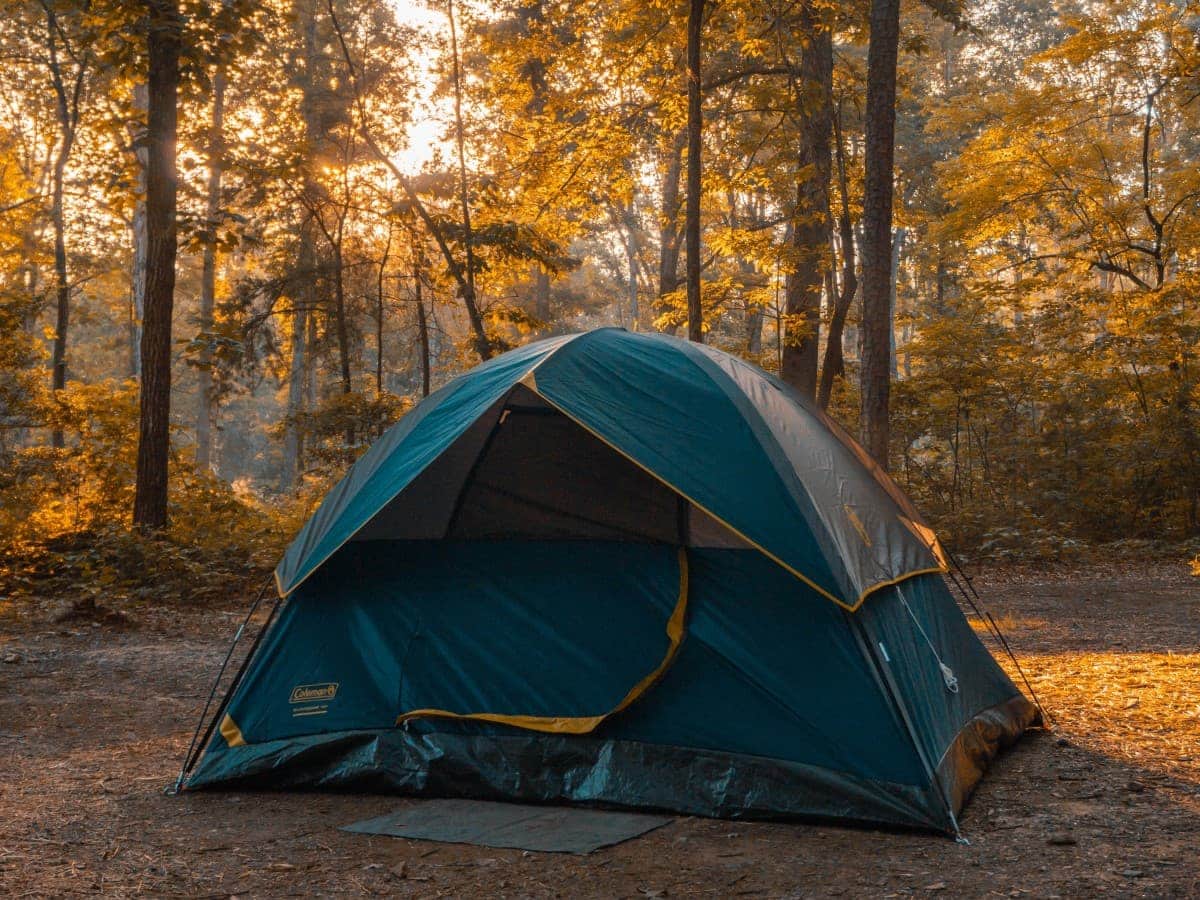
Raised groundsheet. If you suddenly find yourself camping during a downpour – which you will in Scotland – it’s possible for the ground to become waterlogged which will let water run inside your tent, usually from the porch.
To combat this, make sure your tent has a groundsheet (the layer that makes contact with the ground) with a raised lip that sits at least 2-3 inches above the ground.
Fire retardant. Tents sold in the UK have to pass stringent tests to prove they will not set alight at the merest whiff of a naked flame, which is something to bear in mind if you’re lighting anti-midge candles or using a BBQ. For this single reason it is not advisable to order any cheap tent from overseas – especially China – as there is usually no proof that the tent meets British fire standards.
Tent porch. Almost all family tents have a front porch but many of the smaller backpacking tents do not, so consider what you’ll be doing on your outdoor holiday before purchasing a tent.
A porch is invaluable if you’re staying in the same spot for more than a few days as it offers (some) security to store your gear as well as giving you somewhere to sit when the weather closes in. If your tent doesn’t have a porch an alternative is to take a pop-up beach tent with you.
Tent Types
Tunnel tents are usually reserved for weekend and festival types of tents. They either have two sleeping compartments at either end, joined by a communal porch, or a single sleeping compartment with a porch and/or a canopy at the front. These tents are designed with arched sections that use flexible poles to provide rigidity.
Geodesic tents are smaller than tunnel tents, so they’re the design of choice for most backpacking tents. The tent is very rigid because of the flexible poles that cross over one another to support them. In the case of backpacking tents, there will be no porch, and the structure will be low-lying, making it ideal for use in windy areas.
Dome tents also have cross-over poles, but their sleeping and porch sections are taller, making them ideal for family or weekend use where you want to stand up in the communal and bedroom sections. Due to their increased height, they are not suitable for use in exposed areas, but they’re perfect for campsites.
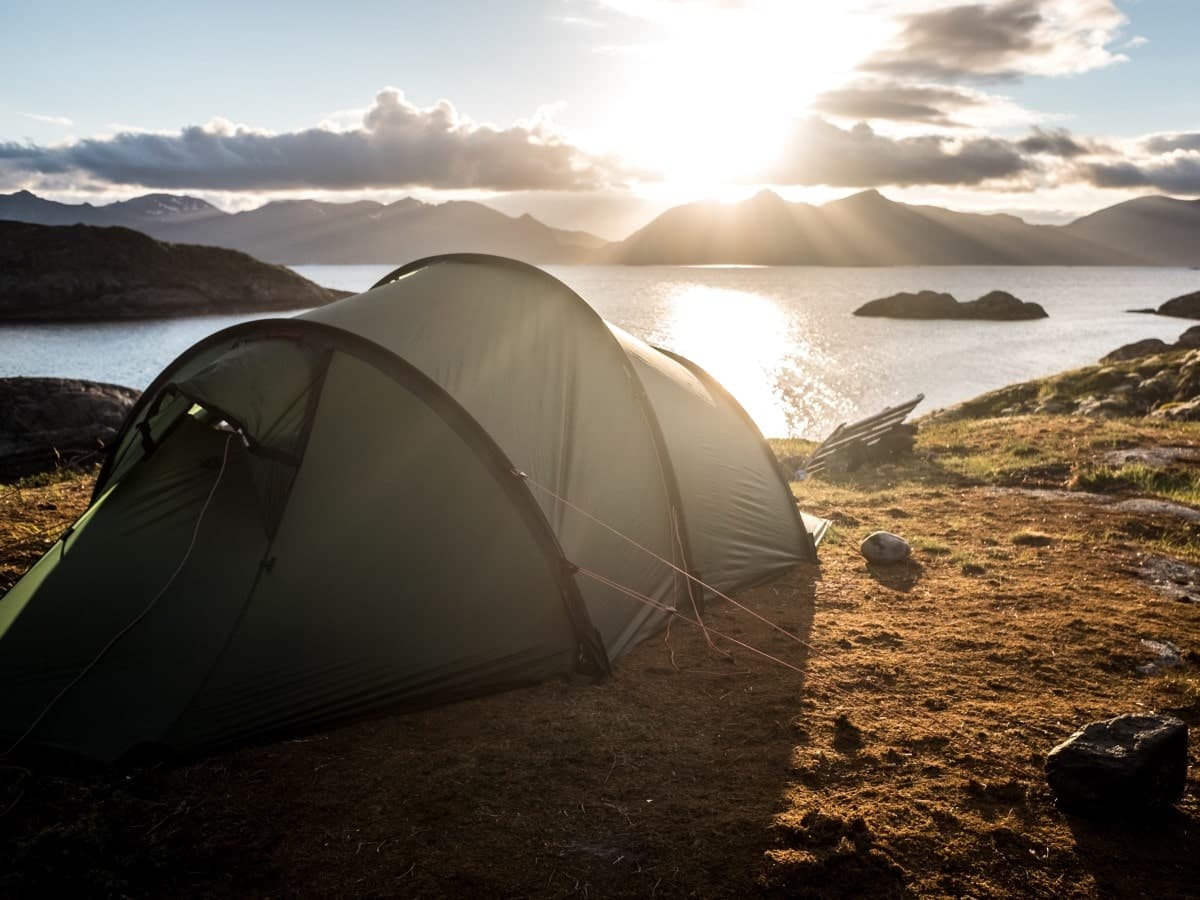
Tent Pole Types
Fibreglass poles are used in the majority of tents as they are very lightweight and simple to put together. The poles are held together with an elastic cord that runs through the middle, and assembly is as simple as slotting each pole onto the next.
The tent will have a tube of material that you insert the pole into which secures at the corner of each section of the tent. The big downside with fibreglass poles is they are prone to shattering under strain, so it is advisable to carry spares with you.
Steel or aluminium poles are a bit old-school but are still used in many top-tier tents. The advantage is that they are very durable and will not shatter like fibreglass. They’re used in the same manner as fibreglass poles, but due to their weight, they are usually reserved for festival tents and campsite tents that do not need to be carried very far.
Inflatable tents are new to the market but are rapidly taking over from metal poles in large tents. In this tent design, air pockets are inflated with a pump, and no poles are used at all. The air pockets become very rigid once pumped up, and they allow for much faster and easier pitching. The main downside is the price, which starts at around £300 for a 3-berth tent and rises to over £1,000 for a 6- to 8-berth tent.
Conclusion
There are a bewildering number of options when it comes to tents to use on a summer camping trip in Scotland, but not all of them are up to the job. You don’t have to spend a fortune to get a good one, as can be seen in the Amazon Basics tent, but the quality and features do increase the more you’re willing to pay.
Unless you’re an avid outdoors fanatic you’re probably not going to need every bell and whistle imaginable, but the core features of durability, weatherproofing, lightness and compactness are pretty much a necessity. With that thought in mind, I have no hesitation in recommending the Coleman Coastline 3 Plus which is a well-made tent from a very reputable manufacturer.
It comfortably sleeps three people, has a large covered living space, is easy to pitch, it’s wind and waterproof, is small enough to chuck in the boot of the car and light enough to carry on a short walk. It’s also reasonably priced and will cover you for pretty much any camping scenario in Scotland, plus the great quality of every single piece – from the outer liner to the fibreglass supports – means it will last for years. Well done Coleman.
Note that all product reviews on this page are the opinion of Out About Scotland and your experience with these products may differ.











